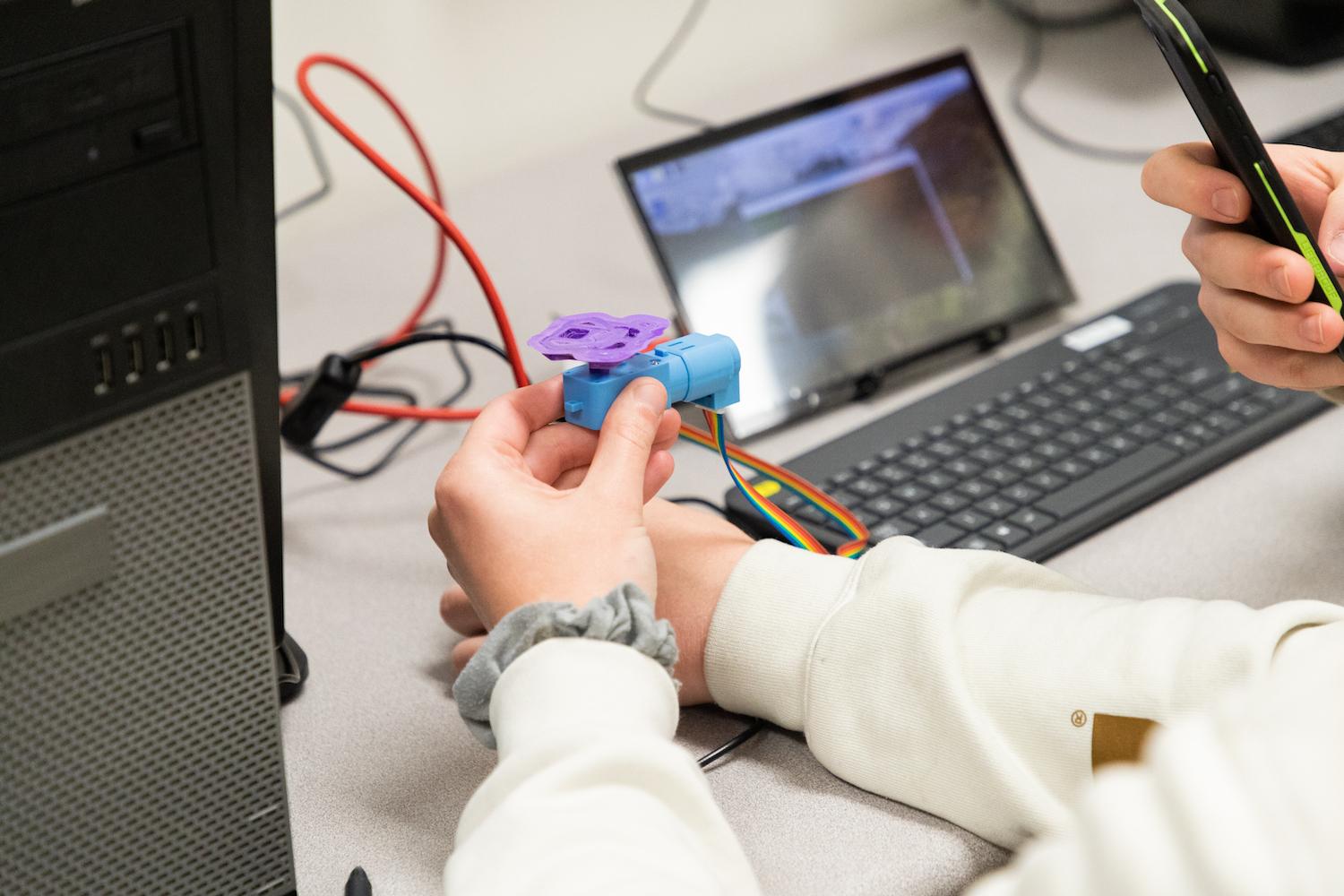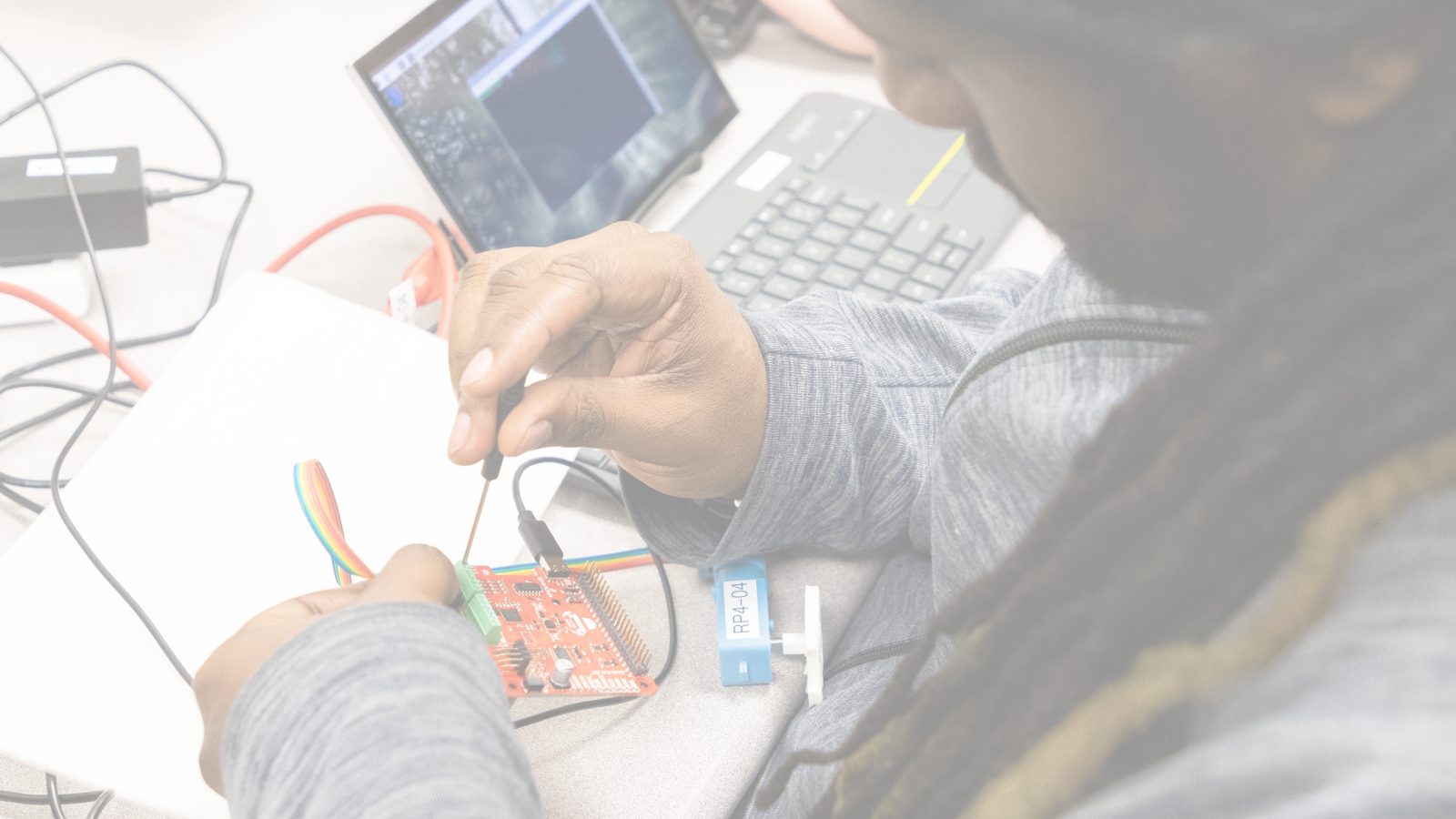
No Whipped Cream Needed: Professors Use Raspberry Pi Boards to Revamp Lab


I thought, ‘How can we have the students build something in class and collect meaningful data just like they will in the real world?’
- Kristy Brinker Brouwer

It happens to the best of them—Batman, Spider-Man, Superman. The reboot. Thanks to Dr. Jennifer Bastiaan, Associate Professor of Mechanical Engineering, and Kristy Brinker Brouwer, Mechanical Engineering Professor of Practice, the Dynamic Systems with Controls Lab (MECH-431) is joining the club.
“We’re trying to make it fun while teaching the core concepts,” Bastiaan said. “We know how the students think because we were them.”
Brinker Brouwer earned her Bachelor’s degree and Master’s degree in Mechanical Engineering from Kettering in 2001 and 2003, respectively. Bastiaan is a member of the Kettering class of 1997. Together, they are using a Center for Excellence in Teaching and Learning (CETL) Terrell Teaching Innovation Grant to pay for the materials for upgrading the two labs.
“The labs were strictly computer-based previously. This is hands-on, using the Raspberry Pi platform,” Bastiaan said.
In the revamped course, students will complete assignments involving physical measurements and analysis of sound pressure signals and also reverse engineer products using the Raspberry Pi computing platform. Previous course terms focused more on simulation-based projects.
Now, students will code various simulations and demonstrate their designs in an end-of-term robot competition. The Raspberry Pi used in class has four gigabytes of RAM and a quad-core processor from Broadcom. Bastiaan said it is similar to what is in a smartphone but less powerful than a laptop.
Moving away from simulation work solves two other problems: cost and academic dishonesty. The previous hardware in the course needed to be replaced, which was expected to cost $150,000. In the new course setup, motors are $6 each; a Raspberry Pi is $55. The new hardware kits include a Raspberry Pi board, a wireless keyboard with touch pad, a 10-inch touch-screen monitor, an AUTO pHAT daughter board for extended functionality, a DC motor with encoder and a camera module and more.
“Many students have these same things at home that they are tinkering with,” Brinker Brouwer said. “It’s incorporating sophisticated software that industry is using with their fun toys to do interesting things.”
In addition, faculty members will now have more freedom to change the assignments from term to term, reducing the chance of repeating old and outdated material.
“It was very dry, boring and had little experimentation, hands-on learning and hardware,” Bastiaan said about the previous course layout.
Brinker Brouwer agreed.
“Mechanical engineers like to build stuff and break stuff,” she said. “They want their hands on it. The material they are learning really clicks when they see an application physically responding to their own designed input.”
The idea for the motor change came to Brinker Brouwer during the pandemic. Her grandmother was in a nursing home and couldn’t have visitors. Brinker Brouwer found a way for her family to communicate with her grandmother through a Lovebox.
A Lovebox is a small, wooden box with a heart on the outside that receives text messages through an app. Whenever it gets a text, the heart spins. Her grandmother could then rotate the heart in the opposite direction to send the family emoji hearts back.
Like most engineers, Brinker Brouwer was curious about the mechanics of the box, so she took it apart. She discovered it didn’t take much to create—a small DC motor powered the rotation of the plastic heart and an LCD screen displayed the message.
“I thought, ‘How can we have the students build something in class and collect meaningful data just like they will in the real world?’” Brinker Brouwer said.
During the Spring Term, the students did just that by making their own boxes with bulldogs instead of hearts, as they reverse engineered the Lovebox using a Raspberry Pi coded with MATLAB and Simulink software.
“Reverse engineering is a really big thing in industry to understand competitors’ products and what makes them tick,” Bastiaan said. “This is good preparation for future work. When I worked in industry, we would buy whole cars and tear them down piece by piece. Other companies would pay for that information to know their competitors’ products.”
In addition, students are using the Raspberry Pi board with a USB microphone to collect sound pressure data, filter it and compare it to data collected with a professional data acquisition system. Students also have used the Raspberry Pi with MathWorks programming workflows to create and debug program code in one mode and implement the debugged code in another mode. They have experimented with the workflows to perform exercises with blinking lights on the Raspberry Pi board and spinning the DC motor attached to the AUTO pHAT.
Jonathan Eby ‘24 has enjoyed implementing the lecture concepts.
“This hands-on experience provides the opportunity to understand the practical side of an analytically intense course,” he said.
Matthew Graver ‘23 agreed.
“I have thoroughly enjoyed the ability to use new technology to program functions for lab, and these devices make it easier to visually understand what I am accomplishing and how the data fits with our lab goals,” he said. “The use of the Raspberry Pi devices, in particular, have been quite useful and educational to use.”
Angel Najjar ‘23 said she couldn’t imagine learning the concepts without the new hardware kits.
“Seeing your code run is one thing, but getting to physically see it run a motor, solve problems, etc. has given me a concrete understanding of what we are doing and its purpose,” she said.
Eby said he would recommend this lab to other students.
“Not only is it required for a Mechanical Engineering degree, but it has been an enjoyable learning experience,” he said.
Graver added, “This lab does a great job giving you more programming experience, and students get to learn how to use different technologies to work toward programming different functions. Becoming more familiar with MATLAB and the Raspberry Pi devices has been one of the highlights of the class that I know will benefit me in the future.”
Najjar also would recommend the class.
“I think I have learned a ton,” she said. “I like how hands-on it is, and I am way more confident in my programming abilities.”
It looks like the reviews are in, and students like this reboot.










